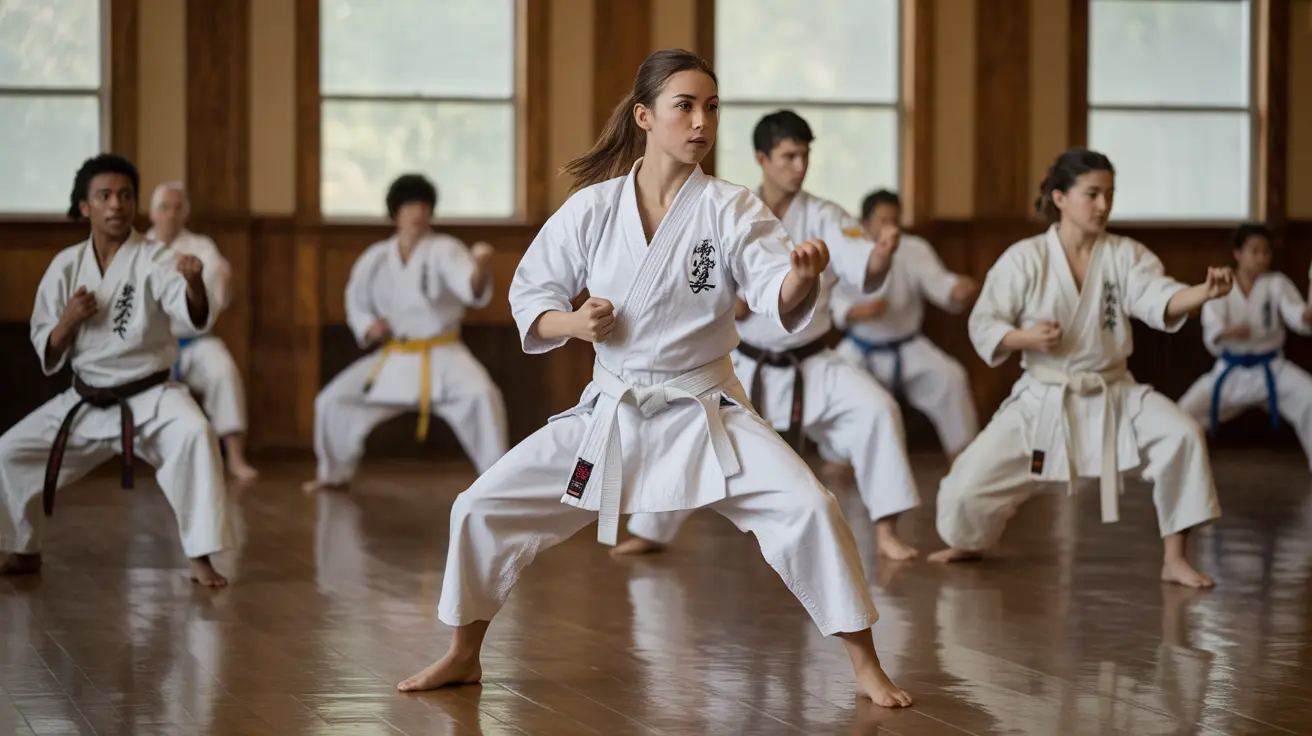Karate, a revered martial art with roots in Okinawa, Japan, encompasses several distinct styles, each offering unique approaches to self-defense, physical conditioning, and spiritual development. Understanding these different forms can help practitioners choose the style that best aligns with their goals and personal philosophy.
In this comprehensive guide, we'll explore the major karate styles practiced worldwide, examining their distinctive characteristics, training methods, and philosophical foundations.
Shotokan Karate: The Foundation of Modern Karate
Shotokan, developed by Master Gichin Funakoshi, is characterized by its emphasis on powerful, linear movements and deep stances. This style focuses on delivering maximum power through precise technique and proper body alignment.
- Long, deep stances for stability
- Linear, explosive techniques
- Strong emphasis on fundamentals
- Systematic progression from basic to advanced techniques
Goju-Ryu: The Hard and Soft Way
Goju-Ryu combines hard (go) and soft (ju) techniques, creating a balanced approach to self-defense. This style emphasizes close-quarter combat and incorporates both circular and linear movements.
- Integration of both striking and grappling techniques
- Focus on proper breathing methods
- Emphasis on close-range fighting
- Development of internal and external strength
Wado-Ryu: The Way of Harmony
Wado-Ryu represents a unique fusion of traditional karate and jujutsu principles. This style emphasizes evasion and redirection of force rather than meeting force with force.
- Shorter, higher stances for mobility
- Integration of throws and joint locks
- Emphasis on body shifting and evasion
- Focus on speed and timing
Kyokushin: The Ultimate Truth
Known for its intense physical conditioning and full-contact sparring, Kyokushin karate develops exceptional mental and physical toughness. This style emphasizes practical application and real-world effectiveness.
- Rigorous physical conditioning
- Full-contact sparring
- Strong emphasis on fighting spirit
- Progressive resistance training
Shito-Ryu: The Technical Synthesis
Shito-Ryu combines elements from various Okinawan martial arts traditions, offering a comprehensive technical curriculum. This style is known for its extensive kata repertoire and balanced approach to training.
Uechi-Ryu: The Chinese Influence
Uechi-Ryu reflects strong Chinese martial arts influences, particularly in its circular movements and emphasis on body conditioning. This style features unique training methods and specialized defensive techniques.
Frequently Asked Questions
What are the main differences between Shotokan and Goju-Ryu karate styles?
Shotokan emphasizes long-range fighting with linear movements and deep stances, while Goju-Ryu focuses on close-quarter combat, combining hard and soft techniques. Shotokan techniques are typically more explosive and direct, whereas Goju-Ryu incorporates more circular movements and close-range applications.
How does Wado-Ryu karate incorporate principles from jujutsu?
Wado-Ryu integrates jujutsu principles through its emphasis on evasion, body shifting, and joint manipulation techniques. The style incorporates throws, locks, and takedowns alongside traditional karate strikes, using shorter stances for improved mobility and quick transitions.
What are the benefits of practicing Kyokushin karate for physical fitness and discipline?
Kyokushin karate provides extensive physical benefits through its emphasis on full-contact training and rigorous conditioning. Practitioners develop exceptional strength, endurance, and mental fortitude. The style's demanding nature cultivates self-discipline, perseverance, and emotional control.
How does Shito-Ryu karate balance hard and soft techniques?
Shito-Ryu achieves balance by incorporating both powerful, direct techniques and softer, more circular movements from various Okinawan traditions. The style maintains extensive kata practice while emphasizing practical application, allowing practitioners to develop both power and fluidity.
What are some unique features of Uechi-Ryu karate and its historical roots?
Uechi-Ryu's distinctive features include its Chinese martial arts influence, circular blocking techniques, and emphasis on body conditioning. The style originated from Chinese Pangai-noon kung fu and maintains unique training methods, including specialized exercises for developing focused power and defensive capabilities.




